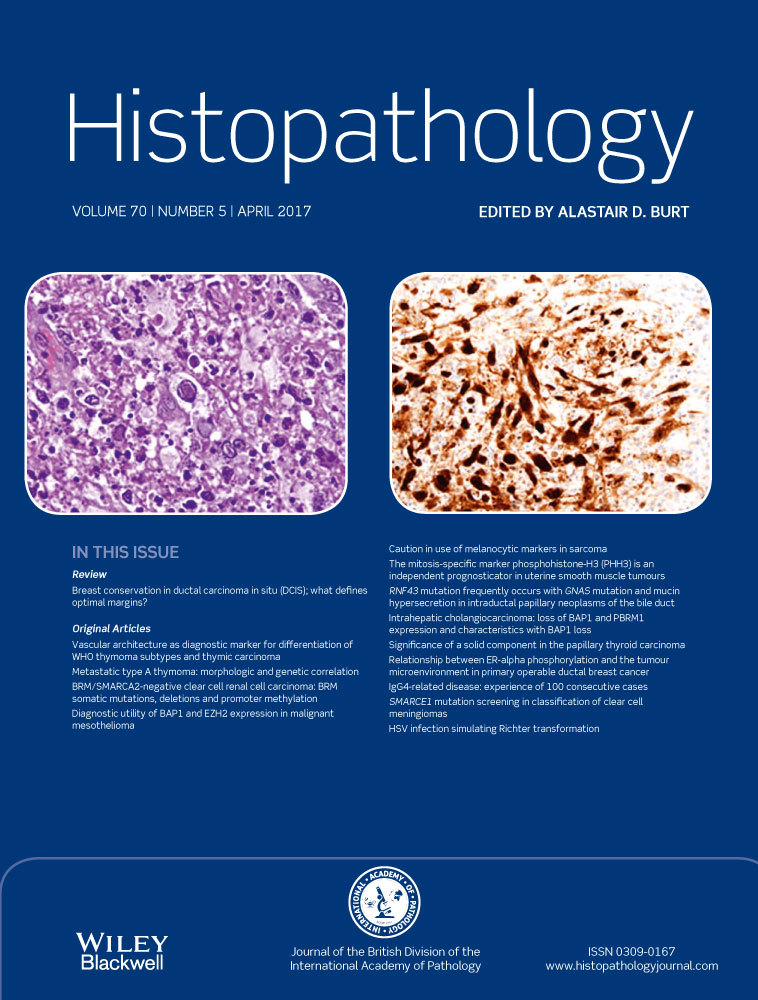Diagnostic utility of BAP1 and EZH2 expression in malignant mesothelioma
Abstract
Aims
Malignant mesothelioma is a highly aggressive cancer that is usually diagnosed at advanced stages; thus, highly sensitive and specific markers are necessary for its early definitive diagnosis. The aim of this study was to evaluate the diagnostic utility and prognostic significance of BAP1 and EZH2 in malignant mesothelioma.
Methods and results
The expression of BAP1 and EZH2 was investigated by immunohistochemistry in 32 malignant mesotheliomas and 44 benign mesothelial proliferative lesions, including well-differentiated papillary mesothelioma (n = 4), mesothelial inclusion cyst (n = 22), and reactive mesothelial hyperplasia (n = 18). BAP1 loss and high EZH2 expression were observed in 17 (53%) and 22 (66%) malignant mesothelioma cases, respectively, whereas none of the benign lesions showed BAP1 loss or high EZH2 expression. The combination of BAP1 loss and high EZH2 expression as markers to differentiate epithelioid/biphasic malignant mesothelioma from benign mesothelial lesions was highly sensitive (90%) and specific (100%). There were no statistically significant associations between parameters such as age and sex of patients, tumour location, asbestos exposure, treatment, histology, and BAP1 or EZH2 expression. Survival analysis revealed that BAP1 loss, but not high EZH2 expression, was associated with a better prognosis.
Conclusions
BAP1 loss and high EZH2 expression were highly specific to malignant mesothelioma in differentiating it from benign mesothelial proliferations, and the combination of these two markers improved the diagnostic accuracy.




